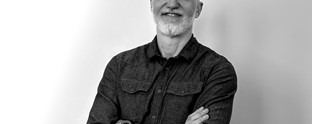Why untethered brand design is the magic to creating customer-centric experiences

Rick Nugent, head of design and innovation at Omnia, discusses the importance of brand designers untethering themselves from everyday assumptions.
So, another year… another Transform Awards night, and another thought-provoking read. What can we say that makes our peers scratch their chins and contemplate life, then start planning next year’s entries?
The design team at Omnia are continuing to create fantastic work and more and more, the collaborative parts of Omnia’s extensive business are now blending together to offer strategic and technology-based solutions that come to life through creative expression with the customer at the heart of all we do.
The idea of ‘untethered brands’ came up in a conversation with our head of strategy recently and really hit a nerve. The idea that we build and deliver extremely intelligent strategic documents that help drive business objectives is something I’m a huge fan of. It allows us to ground the approach in something that’s tangible and removes the ‘S’ word: subjectivity.
So, on a night where we admire all the amazing work the various agencies have done; the strategic direction, the brandmarks, the visual language and tonality, I want to talk a little bit about how brands can be grounded in strategy and can have a design framework which allows consistency. It’s also important that we allow brands the freedom of expression where it needs to, depending on the context and customer objectives.
We have had some large wins this year, and often the ‘strategic approach’ and the ‘big idea’ is not just about the brand expression, it’s an idea that’s founded in something bigger, something that is genuine, authentic, strategic, often trying to do something positive and unique for the brand.
If we untether everyday assumptions, like why things are done in a certain way, designers are open to exploring a world of new possibilities.
Trying to untether brands inevitably leads to more user-centric solutions. Focusing on the needs and experiences of the end-users allows designers to create solutions that are more adaptable, intuitive and engaging. This approach allows designers to think beyond the immediate problem and consider the broader implications of their design, leading to more sustainable and impactful solutions.
When designers are untethered in their approach and collaborate with experts from other completely unrelated fields, such as engineering, psychology or experts in sustainability, it allows us to look at things differently and often from a unique perspective. After all, design is about a deep understanding of a brand and then unleashing that in a variety of expressions.
In today’s world of rapidly changing technologies, designers also need to keep up with the technological landscape. By exploring new tools, ideas, techniques and materials, designers can create experiences that are not only effective but also powerful and meaningful, and often add bottom line results to the balance sheet.
We need to challenge everyday assumptions and conventions. Why do we do things in a certain way? What are the customer objectives? How do we innovate? It’s one of the most important reasons why I still don’t feel that my job is a job.
Being untethered in design inevitably leads to more user-focused solutions. Centering on the needs and experiences of the end-users allows designers to create solutions that are more adaptable, intuitive and engaging. This approach allows designers to think beyond the immediate problem and consider the broader implications of their design, leading to more sustainable and impactful solutions.
As brand designers, we love to untether our thinking, to have that freedom to express, to deliver great ideas, to deliver results. We passionately believe in this idea, and we want our clients to untether their thinking too, that’s when the magic really happens!












